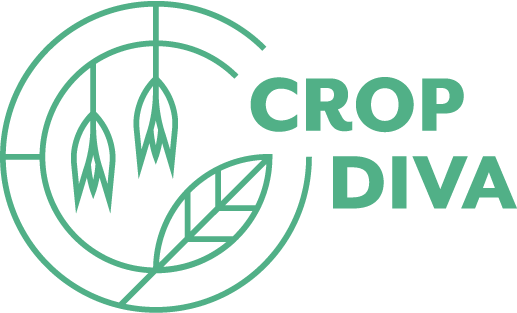- Work package 1: Interactive information platform
- Work package 2: Germplasm diversity
> 2.1 Seed beetles in Faba bean production in North-East Germany
> 2.2 How to successfully produce oats under drought stress
> 2.3 Triticale with yellow rust resistance
> 2.4 Spring oats for autumn seeding
> 2.5 Inoculation of lupin seed
> 2.6 Fast and effective sample collection for cross-pollinating species and their genome wide genotyping
- Work package 3: Diversified cropping systems
> 3.1 Benefits of growing spring cereals and winter cereals in a mixed intercropping system with spring and winter pea under extremely dry weather conditions in Serbia.
> 3.2 A method to estimate crop cover and a case for its use
> 3.3 Mixed intercropping of lentils with hull-less barley in Switzerland
> 3.4 Automated mechanical weeding and intercropping
> 3.5 The importance of including an autumn catch crop in the rotation
> 3.6 Sowing guidelines for mixed intercropping of faba bean/triticale in Belgium
> 3.7 The potential of small landscape features to increase biodiversity and ecosystem services
> 3.8 Use of intercropping with hull-less (naked) barley to support pea production
> 3.9 Intercropping of narrow-leaved lupins and oats
> 3.10 Alkaloids in lupins
> 3.11 Enhanced protein content in spring oats and winter triticale through intercropping with peas in Serbia's Pannonian climate
> 3.12 Pollinators as important ecosystem service providers in arable farmland
> 3.13 Potential of small-landscape elements to enhance the presence of pollinators and improve biodiversity
> 3.14 The potential of plant communities in delivering ecosystem services
> 3.15 Addressing lentil logdging through mixed cropping with cereals
> 3.16. Potential for weed suppression through mixed cropping of faba bean with triticale
> 3.17. Potential for weed suppression through mixed cropping of lupin with oats
- Work package 4: New food/feed and non-food products
> 4.1 The importance of rheological measurements in determining the quality of flour
> 4.2 DIAAS and contribution to RDI: optimization criteria for plant-based protein mixtures
> 4.3 Triticale as silage crop
> 4.4 Ensiling of mixed intercropping of faba bean/triticale
> 4.5 How to get plant-based meat analogues from CROPDIVA crops
> 4.6 Generic food safety assessment system when changing crop management
> 4.7 Intercropping and food safety
> 4.8 Assessing food safety hazards in oat-lupin intercropping
> 4.9 Molecular characterization of grains for agrobiodiversity valorization
> 4.10 Hybrid burgers of meat and texturized vegetal proteins
> 4.11 Improving protein quality of an oat-based drink
> 4.12 Optimization of the faba bean flour quality for bread applications
- Work package 5: Regional value chains
> 5.1 The buckwheat food value chain in Belgium
> 5.2 The lupin food value chain in Belgium
> 5.3 The oat food value chain in Belgium
> 5.4 The triticale food value chain in Belgium
> 5.5 How should neglected and underutilized crops be promoted in Belgium?
> 5.6 The voice of the consumer: Public opinions on policies promoting neglected crops
- Work package 6: Communication and dissemination
> 6.1 Multi-stakeholder meeting
